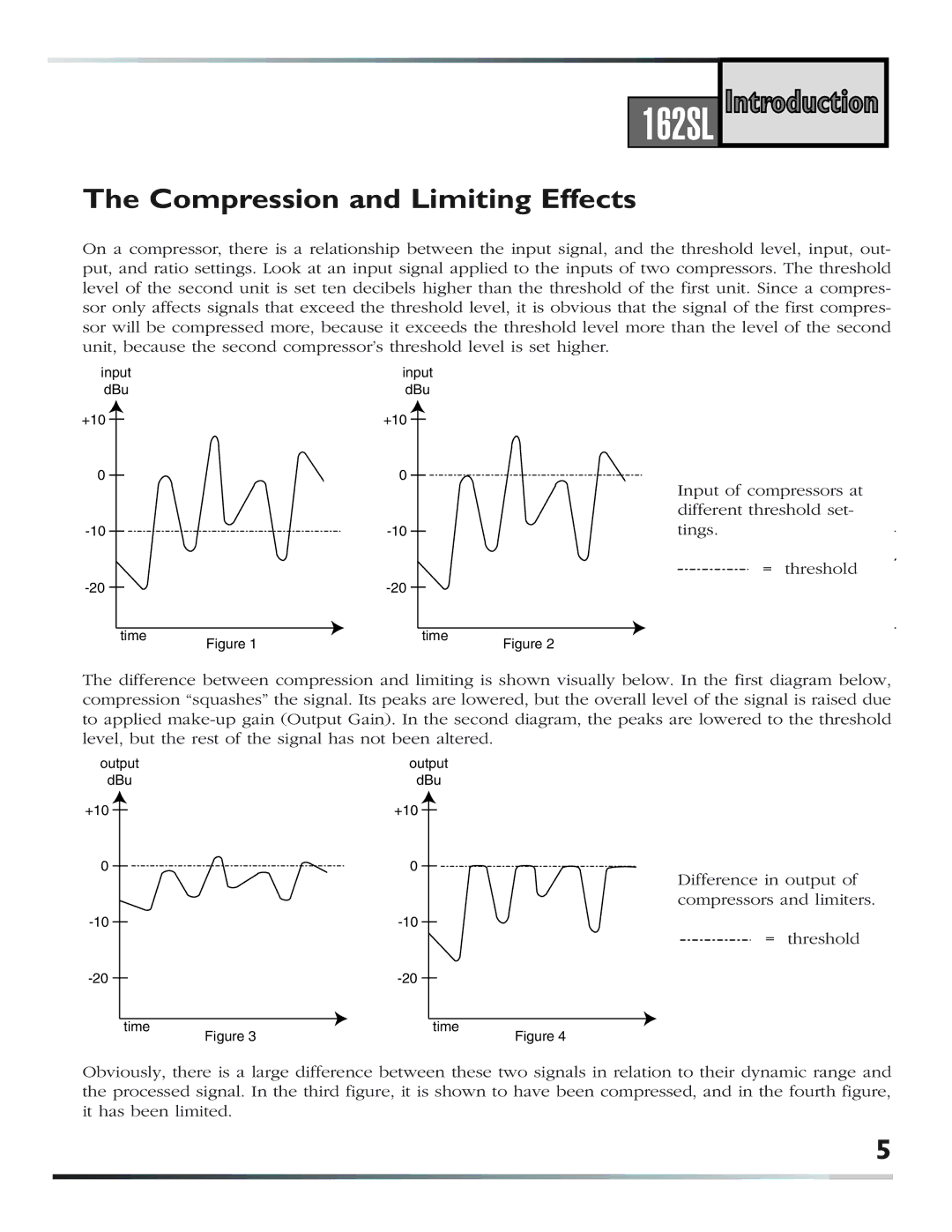
The Compression and Limiting Effects
On a compressor, there is a relationship between the input signal, and the threshold level, input, out- put, and ratio settings. Look at an input signal applied to the inputs of two compressors. The threshold level of the second unit is set ten decibels higher than the threshold of the first unit. Since a compres- sor only affects signals that exceed the threshold level, it is obvious that the signal of the first compres- sor will be compressed more, because it exceeds the threshold level more than the level of the second unit, because the second compressor’s threshold level is set higher.
input
dBu
+10
0
time
Figure 1
input |
| input |
|
dBu |
| dBu |
|
+10 |
| +10 |
|
0 |
| 0 |
|
|
| Input of compressors at | |
|
| different threshold set- | |
|
| ||
|
| = | threshold |
|
| ||
time | Figure 2 | time | Figure 1 |
|
| ||
The difference between compression and limiting is shown visually below. In the first diagram below, compression “squashes” the signal. Its peaks are lowered, but the overall level of the signal is raised due to applied
output | output |
dBu | dBu |
+10 | +10 |
0 | 0 |
time | time |
Figure 3 | Figure 4 |
Difference in output of compressors and limiters.
= threshold
Obviously, there is a large difference between these two signals in relation to their dynamic range and the processed signal. In the third figure, it is shown to have been compressed, and in the fourth figure, it has been limited.
5
